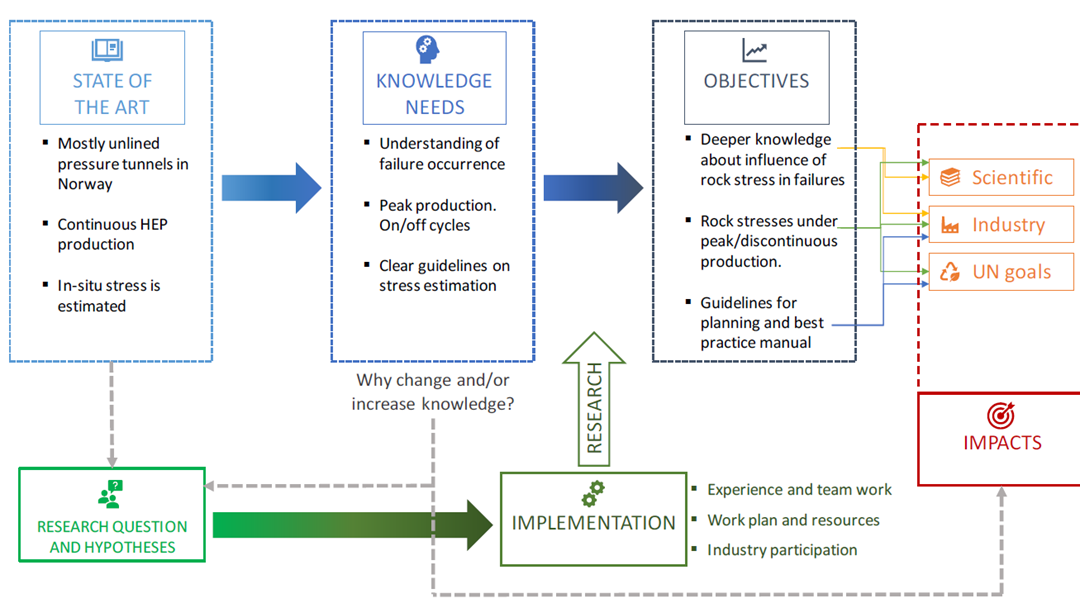About NoRSTRESS
Norwegian Hydro Electric Power (HEP) production has a worldwide reputation for cost efficiency, environmental sustainability and a proven design and construction concept. This especially when designing unlined/shotcretelined pressurized tunnels and the unique unlined aircushion chambers. Estimates show that over 95% of the waterway length of Norwegian HEP scheme is left unlined. An essential part of this design concept is the knowledge of in‐situ rock stress. Experience through the development of HEP projects in Norway has shown that an in‐situ rock stress that is not large enough to balance to the water pressure in a pressurised unlined water tunnel and/or shaft, a hydraulic jacking/fracturing situation is likely to happen. Hydraulic jacking/fracturing will lead to an opening of existing joints (in the worst case create new fractures), leading to an excessive water leakage situation. To prevent this from happening, steel lining is an option for a safe design, though a very expensive solution. The Norwegian design, however, takes advantage of the in‐situ rock stress knowledge to properly locate underground infrastructure and minimise steel lining in the headrace system of a HEP, hence providing a much more cost‐effective solution. Proper knowledge of in situ rock stress is a key factor for a successful development of unlined high‐pressure tunnels and shafts, which then strongly contributes to reduce construction costs and time.
The main objective of NoRSTRESS is to increase the reliability of the design basis for HEP development and thus reduce the risks linked to the in‐situ stress state. This is achieved by increasing the level of competence amongst owners, designers, contractors, research institutions and academia involved in HEP on: (i) in‐situ rock stress, (ii) rock stress measurement methodologies, and (iii) holistic failure‐success interpretations. In this way the upgrade/redesign of existing HEP as well as future HEP projects can be achieved with optimum rock stress utilisation and thus reduced risk (e.g. hydraulic failure). This is of special importance when taking the main new development trends of the future of the HEP industry in Norway into consideration.
NoRSTRESS aims at fulfilling the following three main objectives:
1. Improve the knowledge front on in‐situ rock stress as a large picture of regional stress (deep stress), as well as local stress variations (shallow stress) due to local geological, topographical, and geo‐tectonic features.
2. Identify the behaviour of the rock mass on stress related instability along the waterway system under the condition of frequent cycles of load/unload scenarios that is being emerged and will be the operation scenario in the days to come due to different renewable sources of energy in the grid and its relationship with the in‐situ stress. Through research, the Norwegian unlined tunnel solution for developing HEP projects is strengthening in Norway as well as internationally.
3. Establish rock stress database for the successful evaluation of in‐situ rock stress in HEP as well as other rock engineering projects during planning, construction and operation. Machine learning process can be included to form an "intelligent database" that can be extended and improved with future data.

Project manager
Nghia Trinh
Senior Research Scientist- Name
- Nghia Trinh
- Title
- Senior Research Scientist
- Phone
- +47 45 67 65 48
- Department
- Infrastructure
- Office
- Trondheim
- Company
- SINTEF AS

